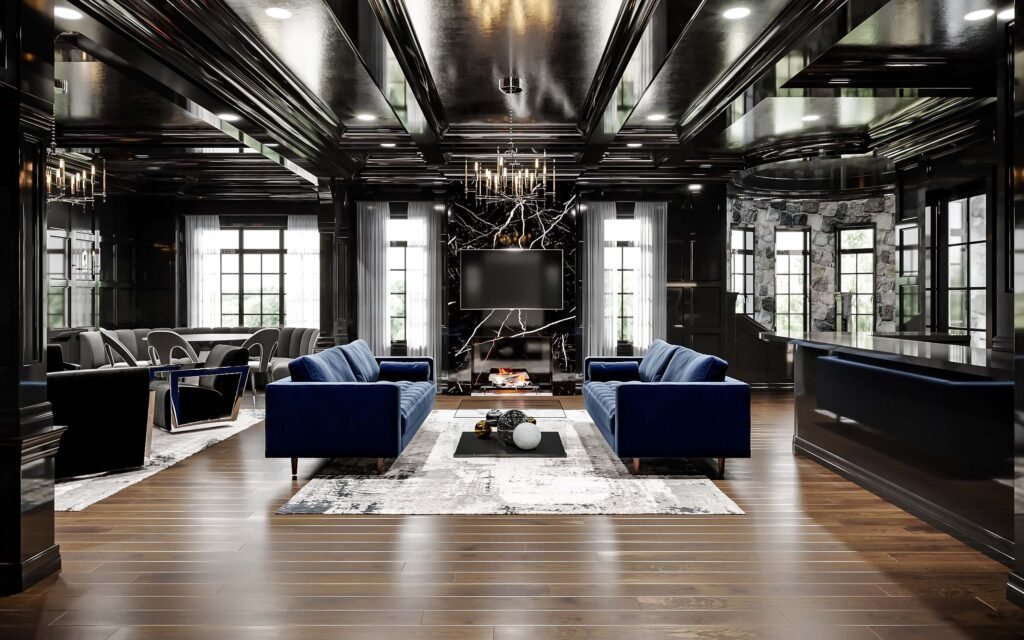Planning a custom home is an exciting journey, allowing you to create a space uniquely suited to your lifestyle, tastes, and future needs. However, without careful planning, the process can feel overwhelming. From budgeting and selecting a location to finalizing design elements, each step is critical to bringing your dream home to life. This guide covers the 10 essential steps in planning a custom home build, ensuring you’re equipped with the knowledge and confidence to make the best decisions throughout the process.
Set a Realistic Budget
- Explanation: Start by determining a budget that covers the entire project, including unexpected costs. Consult with a financial advisor or a custom home builder to estimate accurate costs based on your area and design preferences.
- Tips: Include a 10-15% contingency fund for unforeseen expenses, such as material price increases or unexpected site issues. Budget for not only construction costs but also fees for permits, inspections, and any landscaping or finishing work.
Choose the Perfect Location
- Explanation: Location impacts everything from design options to property value. Consider factors such as zoning laws, proximity to amenities, and environmental conditions.
- Tips: Visit multiple areas, speak to neighbors, and research future developments in the area. Be mindful of sun exposure, drainage, and views that could affect the design of your home.
Select the Right Builder
- Explanation: Your builder is one of the most critical choices in the custom build process. Look for a reputable builder who specializes in custom homes and has experience with projects similar to yours.
- Tips: Interview multiple builders, ask for references, and review previous projects. A good builder will offer insight, communicate clearly, and be transparent about costs and timelines.
Define Your Design Vision
- Explanation: Define your style and layout preferences before moving into the detailed design phase. This can include specific architectural styles, interior layouts, and features you want to include.
- Tips: Create a vision board using inspiration from websites, magazines, and model homes. Discuss your vision with your builder and architect to ensure they understand your preferences and can offer practical suggestions to bring your ideas to life.
Work with an Architect or Designer
- Explanation: An architect translates your vision into a workable design. They consider site conditions, local codes, and functionality, turning your dream home into detailed plans.
- Tips: Communicate openly with your architect about your budget, lifestyle needs, and must-have features. Make sure to review drafts and ask for clarifications on any aspects you’re uncertain about to avoid costly changes later.
Understand Zoning Laws and Obtain Permits
- Explanation: Zoning laws dictate what can be built on your land, including building height, setbacks, and property use. Ensuring compliance is essential to avoid delays or costly redesigns.
- Tips: Work with your builder and architect to review local zoning laws and obtain the necessary permits. They often have relationships with local officials and can navigate this process smoothly on your behalf.
Focus on Energy Efficiency and Sustainability
- Explanation: Energy-efficient homes are not only environmentally friendly but also reduce long-term utility costs. Consider sustainable building materials, energy-efficient windows, and renewable energy options like solar panels.
- Tips: Discuss energy efficiency with your builder early in the planning process. Many energy-efficient features, such as proper insulation and eco-friendly windows, are easier and cheaper to integrate during construction rather than as retrofits.
Plan for Flexibility and Future Needs
- Explanation: Custom homes should be adaptable to your changing lifestyle. Consider your future needs, such as a growing family, aging in place, or a home office.
- Tips: Incorporate flexible spaces like multi-use rooms or designs that can easily accommodate additional features. If you’re planning a home office, gym, or guest room, think about their future adaptability as your lifestyle changes.
Choose High-Quality Materials and Finishes
- Explanation: Your choice of materials affects the durability, aesthetics, and maintenance of your home. High-quality materials might have a higher upfront cost but offer long-term value and lower maintenance.
- Tips: Prioritize materials that provide the best balance of cost, quality, and style. Discuss options with your builder and designer to select materials that match your budget and aesthetic goals.
Stay Involved in the Construction Process
- Explanation: Although your builder will manage construction, staying involved allows you to make informed decisions and address any issues as they arise.
- Tips: Visit the site regularly, ask for updates from your builder, and keep a record of progress and any changes made along the way. Regular involvement can help keep the project on track and ensure the final outcome meets your expectations.
Conclusion
Building a custom home is an investment of time, money, and vision. By following these 10 essential steps, you’ll be well-prepared to handle each phase of the custom build process. From choosing the right team to understanding zoning laws and selecting quality materials, planning ahead ensures your new home reflects your style, meets your needs, and stands the test of time. Ready to start your journey? Connect with experienced builders who will help bring your dream home to life with BuildInUSA.



